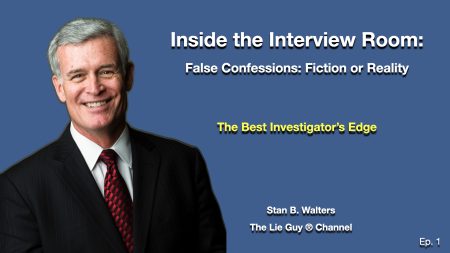Interview Tips and Techniques – Eye Contact and Deception
The myth that won’t die!
One of the most persistent myths about signs of deception is that a break in eye contact is a sign of lying. NOTHING could be further from the truth. The sad part is that law enforcement academies keep shooting themselves in the foot by perpetuating the myth.
I recently read an article posted on PoliceOne.com (an excellent site I might add!) submitted with a title that screamed “The eyes have it: How to detect deception: If there is a #1 rule in the interpretation of non-verbal human behavior, it is to look for breaks in eye contact.”
In my opinion the article was loaded with unsubstantiated declarations and anecdotal evidence as proof positive that breaks in eye contact are the number 1 sign of deception.
The sad thing is, the author trains not only law enforcement and criminal justice agencies as well as loss prevention and risk management professionals. He also professes that he teaches material suitable for “certification.” Based on the content of the article, it is obvious that he has never read single piece of social-psychological research because if he did he would learn that what he is professing “as an authority” is pure bogus myth. Conservatively speaking, there are now well over 30 plus articles outlining empirical evidence that refute his claim. Well… we should won’t want “science” the get in the way of our pre-conceptions!
In the meantime, interrogators and their agencies are being dragged into court for seriously flawed and contaminated victim and witness interviews and severely flawed interrogations including false confession cases. A good portion of the problem can be traced back to courses taught in our academies that espouse such unsubstantiated, disproven, baseless and scientifically inaccurate content that in my opinion borders on the side of negligence.
My message to academies to bring this type of crap into their training schedule should be more diligent about the content and the supporting documentation to avoid this type of drivel.
Of course, this is just my opinion but I would like to hear your point of view including your experiences with the same type of problem.
Stan B. Walters, CSP
“The Lie Guy®”
TheLieGuy.com
Online courses at TheLieGuyAcademy
